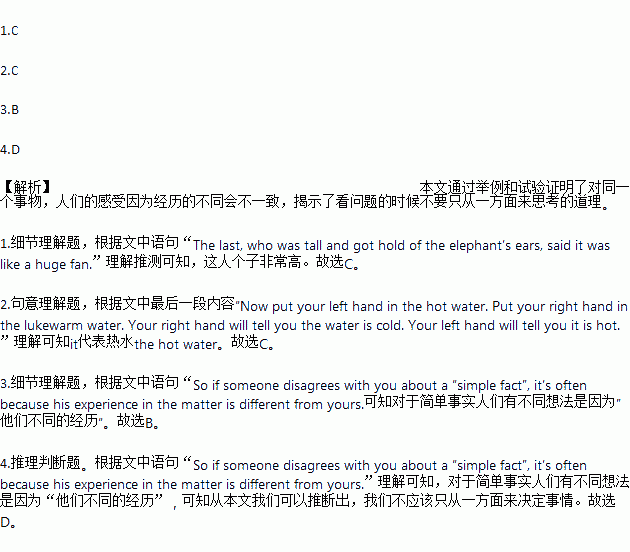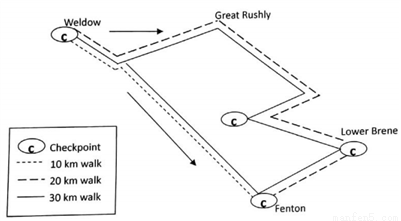题目内容
Do you sometimes argue about what seems to you to be a simple fact? Do you argue whether it’s cold outdoors or whether the car in front of you is going faster than the speed limit (限速)?
If you get into such arguments, try to think about the story about the six blind men and the elephant. The first blind man who felt the elephant’s trunk (象鼻) said it was like a snake. The second who felt the elephant’s side said it was like a wall, while the third said it was like a spear( 矛 ) as he touched the animal’s tusk. The fourth, who took hold of the elephant’s tail insisted that it was like a rope. The fifth man said it looked liked a tree as he put his arms around one of the elephant’s legs. The last, who was tall and got hold of the elephant’s ears, said it was like a huge fan.
Each man’s idea of the animal came from his own experience. So if someone disagrees with you about a “simple fact”, it’s often because his experience in the matter is different from yours.
To see how hard it is for even one person to make up his mind about a “simple fact”, try this simple experiment. Get three large bowls. Put ice water in one. Put hot water in the second. Put lukewarm water (温水)in the third. Now put your left hand in the hot water. Put your right hand in the lukewarm water. Your right hand will tell you the water is cold. Your left hand will tell you it is hot.
1.The man who touched the elephant’s ears must be very_______.
A. heavy B. thin
C. tall D. strong
2.The underlined word “it” in the last line of the paragraph refers to _______.
A. your left hand B. your right hand
C. the water D. the bowl
3.What makes people think about simple facts differently?
A. People’s wrong ideas. B. People’s different experience.
C. Simple facts are different sometimes. D. People often disagree with each other.
4.It can be inferred from the passage that we should__________.
A. learn from the blind men B. not agree about simple facts
C. never think about simple facts D. never decide anything with one side
 通城学典默写能手系列答案
通城学典默写能手系列答案

